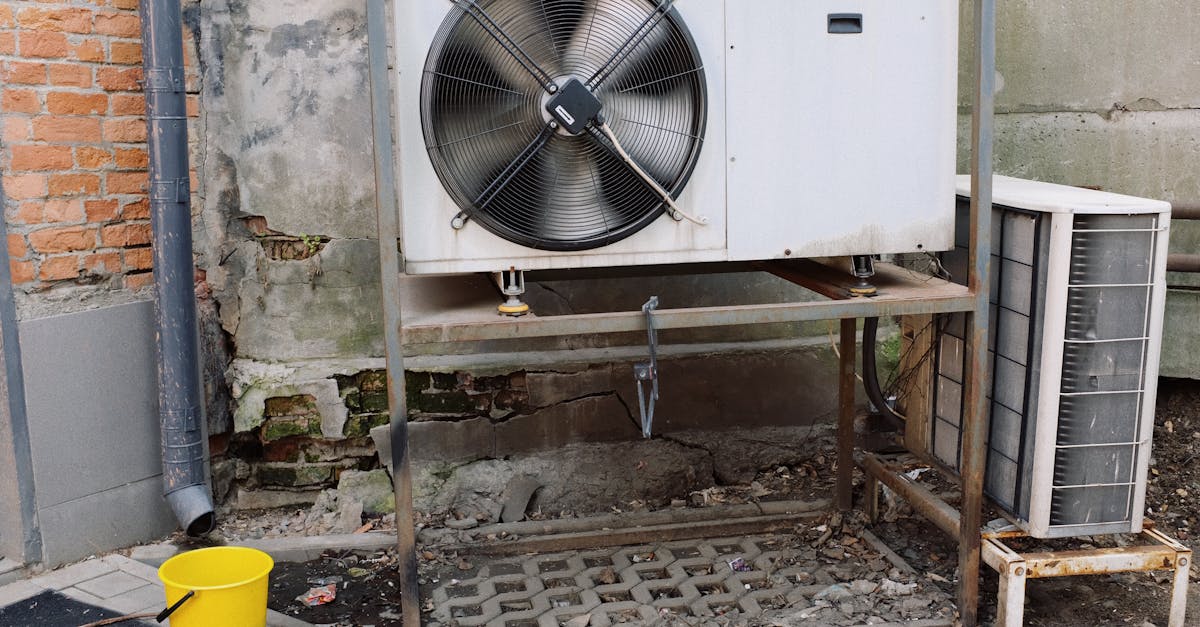
Impact of Tobacco Smoke
Tobacco smoke is a significant contributor to poor indoor air quality, affecting both smokers and non-smokers alike. The complex mixture of harmful chemicals released during smoking contaminates the air, leading to elevated levels of particulates and toxic substances. This is particularly concerning in enclosed spaces, where these pollutants linger much longer than in outdoor environments.
The health risks associated with exposure to secondhand smoke are well documented. Individuals breathing in this contaminated air are at increased risk for respiratory issues, cardiovascular disease, and other serious health problems. Implementing Indoor Air Quality Solutions can help mitigate these dangers by reducing smoke exposure and maintaining a healthier living environment for everyone.
Health Risks Associated with Indoor Smoking
Indoor smoking significantly degrades air quality, releasing harmful chemicals that can linger in the environment long after the smoke has dissipated. Toxic substances such as nicotine, carbon monoxide, and formaldehyde are emitted with each puff, contributing to an array of health issues for both smokers and non-smokers alike. Exposure to these pollutants increases the risk of respiratory diseases, cardiovascular problems, and even cancer. Children and pets are particularly vulnerable, as their developing lungs and immune systems can suffer long-term consequences from inhaling secondhand smoke.
Addressing the dangers of indoor smoking requires effective Indoor Air Quality Solutions. Ventilation systems may help dilute some pollutants, but they often cannot eliminate the rich mixture of harmful compounds found in tobacco smoke. Air purifiers equipped with HEPA filters can significantly reduce particulate matter while activated carbon filters target gaseous pollutants. These measures can make a substantial difference, particularly in homes where smoking occurs regularly, ensuring a safer environment for all occupants.
Role of Pets in Indoor Air Quality
Pets contribute significantly to indoor air quality issues through allergens and particulates they release. Dust, dander, and saliva from pets can accumulate in carpets, upholstery, and surfaces, leading to increased allergy symptoms for sensitive individuals. Regular grooming and cleaning can help mitigate these effects but will not completely eliminate them.
Moreover, the presence of pets can sometimes worsen the situation if proper Indoor Air Quality Solutions are not implemented. Air purifiers and frequent vacuuming can assist in reducing these allergens. Additionally, maintaining a designated pet area can help contain pet-related pollutants within a confined space.
Allergens and Particulates from Animals
Pets can contribute significantly to indoor air quality issues through the release of allergens and particulates. Dander, hair, and saliva produced by animals can circulate in the air and settle on surfaces, creating potential health problems for sensitive individuals. These allergens can provoke respiratory issues, particularly in those with asthma or allergies. The extent of the impact often correlates with the type and number of pets in the home.
Regular cleaning can help manage these particulates, but implementing effective Indoor Air Quality Solutions is crucial for improving overall conditions. Air purifiers equipped with HEPA filters can capture pet dander and other allergens, making the environment safer for its inhabitants. Additionally, maintaining proper ventilation can aid in reducing the concentration of these allergens and improve indoor air circulation.
The Influence of Building Materials
Building materials significantly contribute to indoor air quality. Many products utilized in construction and renovation emit volatile organic compounds (VOCs), which can linger in the air long after installation. These emissions arise from paints, adhesives, and finishes, posing health risks to occupants. Materials such as pressed wood and certain flooring options can release harmful particles that affect the overall air quality in enclosed spaces.
Awareness of these issues has led to increased demand for safer alternatives. Indoor air quality solutions often focus on using low-VOC or VOC-free materials. This shift not only promotes healthier living environments but also encourages manufacturers to innovate and produce products that minimize harmful emissions. By selecting appropriate building materials, individuals can significantly enhance the air quality in their homes and workplaces.
Toxic Emissions from Construction Products
Building materials commonly found in homes and commercial spaces can significantly affect indoor air quality. Products such as paints, adhesives, and sealants often contain volatile organic compounds (VOCs) that can be released into the air over time. These emissions can contribute to a range of indoor pollutants, leading to discomfort and potential health issues for occupants. Understanding the sources of these toxins is critical for maintaining a healthy living environment.
To combat the adverse effects of toxic emissions from construction products, Indoor Air Quality Solutions are essential. Solutions can include selecting low-VOC or VOC-free materials during renovations or new construction. Implementing proper ventilation systems can also help in dispersing harmful substances, allowing for a healthier air quality. Making informed choices regarding building materials not only enhances comfort but also promotes overall well-being for those who inhabit the space.
FAQS
What are the main causes of poor indoor air quality?
The main causes of poor indoor air quality include tobacco smoke, allergens and particulates from pets, and toxic emissions from building materials and construction products.
How does tobacco smoke affect indoor air quality?
Tobacco smoke releases harmful chemicals and particulates into the air, which can lead to significant health risks for both smokers and non-smokers, contributing to poor indoor air quality.
What role do pets play in affecting indoor air quality?
Pets can contribute to poor indoor air quality by shedding dander, hair, and producing allergens, which can lead to respiratory issues and allergies in sensitive individuals.
Are there specific building materials that can worsen indoor air quality?
Yes, certain building materials can release toxic emissions, such as formaldehyde and volatile organic compounds (VOCs), which can deteriorate indoor air quality and pose health risks.
How can I improve my indoor air quality?
To improve indoor air quality, consider reducing tobacco use, maintaining a clean living environment free of pet allergens, using low-emission building materials, and ensuring proper ventilation in your home.
